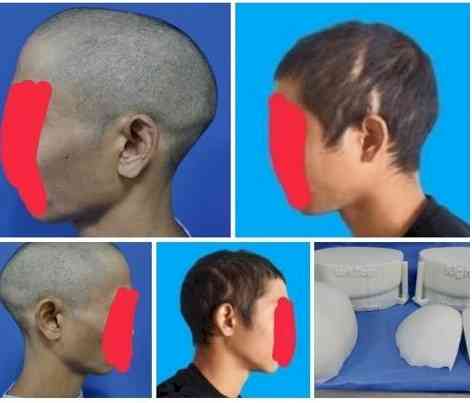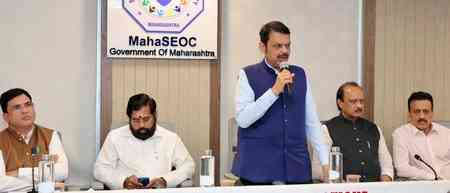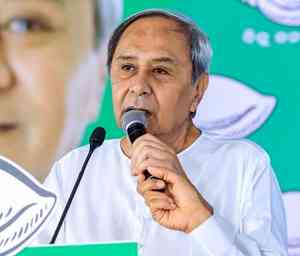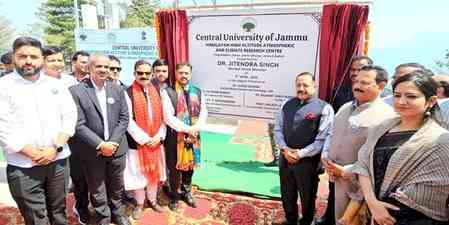Doctors at Sakra World Hospital corrects 27-year-old’s Head Deformity with Cranioplasty
The thing about human skulls is that each are different, and a little asymmetry is generally witnessed. But what if, the skull is a little more out of the ordinary and not in shape. Such was the case observed in Peter (name changed), 27-year-old male hailing from Arunachal Pradesh, who was presented to Sakra World Hospital with the chief complaint of head deformity since childbirth. On examination, Peter was diagnosed to have Craniosynostosis or an asymmetrical head with no other neurological or congenital abnormalities noted.

Bengaluru, August 27, 2022: The thing about human skulls is that each are different, and a little asymmetry is generally witnessed. But what if, the skull is a little more out of the ordinary and not in shape. Such was the case observed in Peter (name changed), 27-year-old male hailing from Arunachal Pradesh, who was presented to Sakra World Hospital with the chief complaint of head deformity since childbirth. On examination, Peter was diagnosed to have Craniosynostosis or an asymmetrical head with no other neurological or congenital abnormalities noted.
Craniosynostosis is defined as a birth defect wherein the bones in a child’s skull join earlier than usual before the brain is fully formed. The condition, if left untreated, can lead to serious health complications like seizures or increased pressure on the brain. While the exact cause of Craniosynostosis is yet to be determined, the treatment usually involves unlocking the bones and reshaping the skull using surgical method.
Peter had initially undergone a fat grafting surgery to correct the deformity a year back but still complained of persistent head deformity despite the fat graft. Upon consulting the experts at Sakra World Hospital and examining his condition, they proceeded to conduct Cranioplasty to correct the posterior part of the skull with the deformity.
The treatment process started with analyzing the deformity followed by a 3D Computed Tomography to collect multiple CT images for the examination the skull, the results of which were rendered with a dedicated software that digitally recreated the cranium or the head with a high degree of accuracy. Based on the results of CT scan and the computer-aided 3D model of the skull, the decision to undertake cranioplasty to correct the occipital contour deformity was taken. Using the 3D model of the skull, Polymethylmethacrylate bone cement was used and secured with titanium after an incision was done in Peter’s head till the loose areolar plane. A mesh was covered with pericranium and closure of the wound was done in layers.
Post procedure care is of utmost importance. A protective compressive bandage was done to give shape to the corrected skull of Peter for 2-3 days, and a drain was placed to remove the excessive blood which may collect in the surgical site and is removed at the discretion of the surgeon. After 3 days the site was kept open and a topical ointment was applied to the wound. In around 10 days the sutures are removed and Peter was advised to avoid head contact. For some patients, a helmet may be used in the molding of the cranium.
Commenting on the procedure, Dr Rajendra, Senior Consultant & HOD - Plastic Surgery, Sakra World Hospital said, “The deformity caused due to Craniosynostosis is treated mainly due to neurological and cosmetic reasons. Surgery is the ideal treatment option and is preferable performed in the infancy (< 1 years) where the prognosis of the surgery is optimal. Few patients may face neurological consequences as a result of the unyielding pressure from the fixed cranium to the underlying brain, thus resulting in cognitive impairment. In Peter’s case, he was presented at an adult age and needed to correct the deformity for cosmetic reasons. Since his cranium was no longer pliable, we used bone cement as the only reasonable option to correct the deformity. It is important for parents to identify the deformities in the infancy stages and reach out to the doctors to get it corrected to avoid neurological complications later in life. At Sakra World Hospital, the early intervention along with quality surgery help in the success of such surgeries.”
Thanking the experts at Sakra World Hospital, Peter shared, “Since childhood, my head deformity made me special and unique. But as I grew up, it became a matter of concern and so, we decided to get it rectified. While correcting the deformity at a younger age would have helped and had a better outcome, nonetheless, Dr Rajendra and his team has ensured the same result at my current age too. My family and I sincerely thank him and everyone at Sakra World Hospital for their help.”


 City Air News
City Air News 








